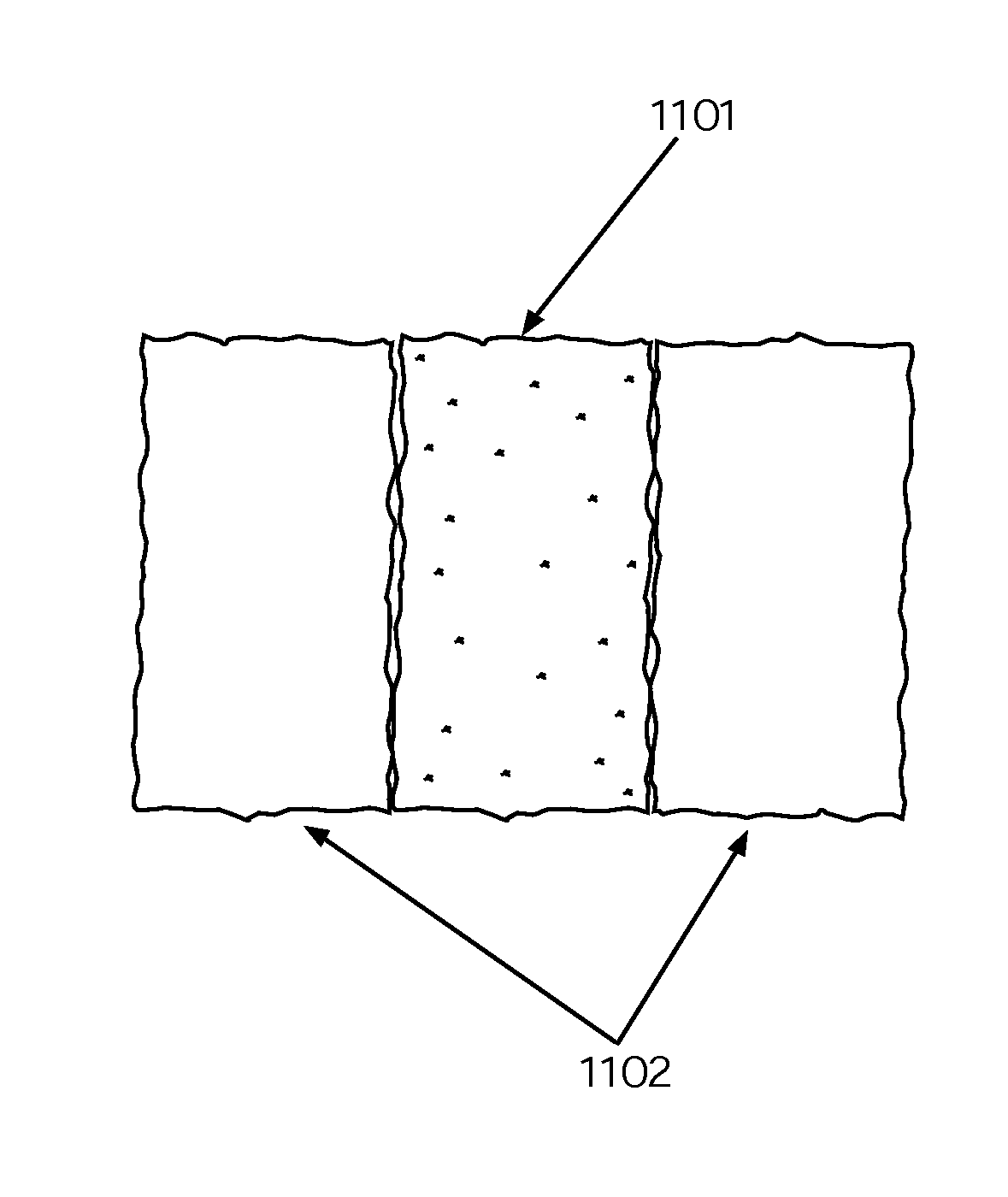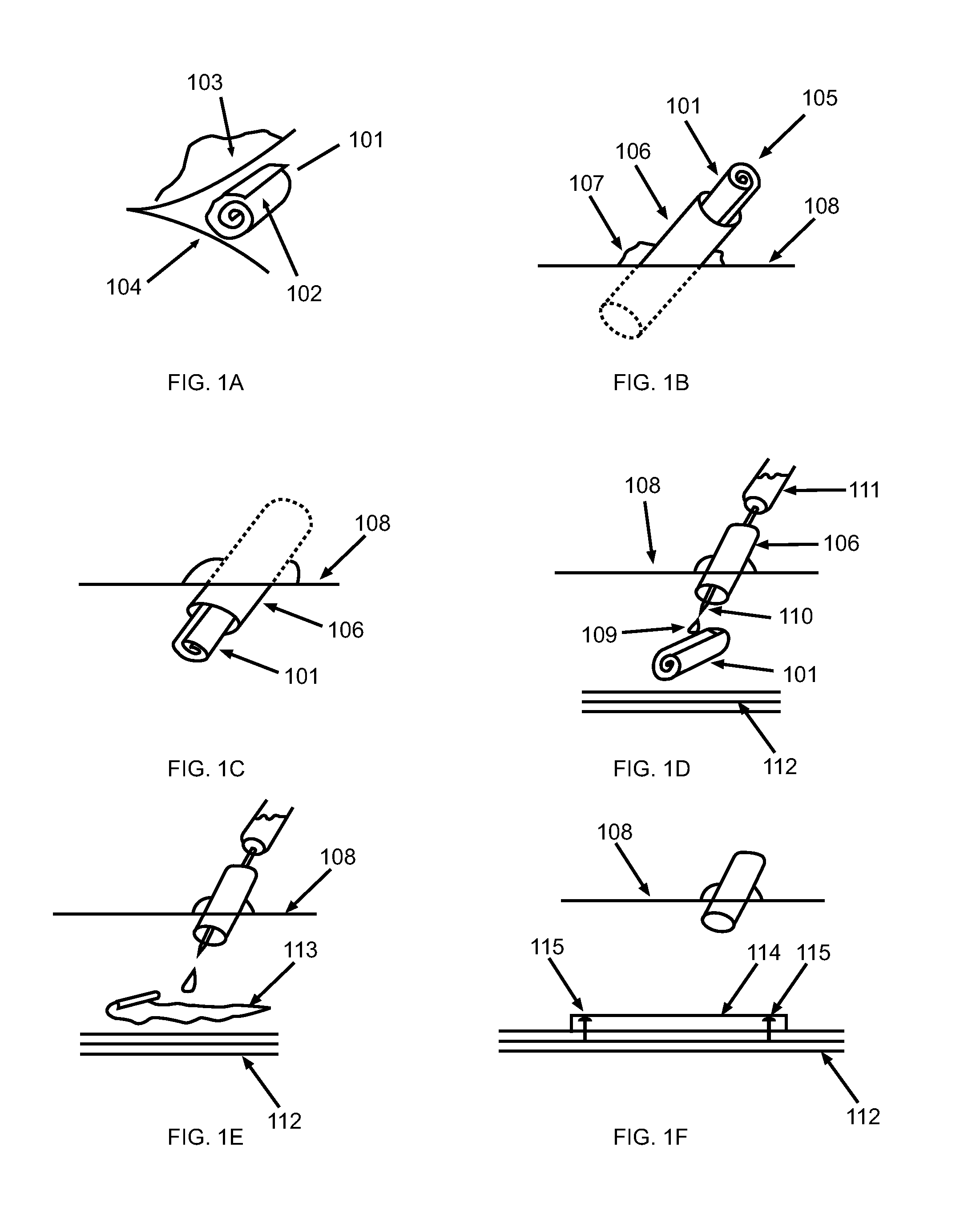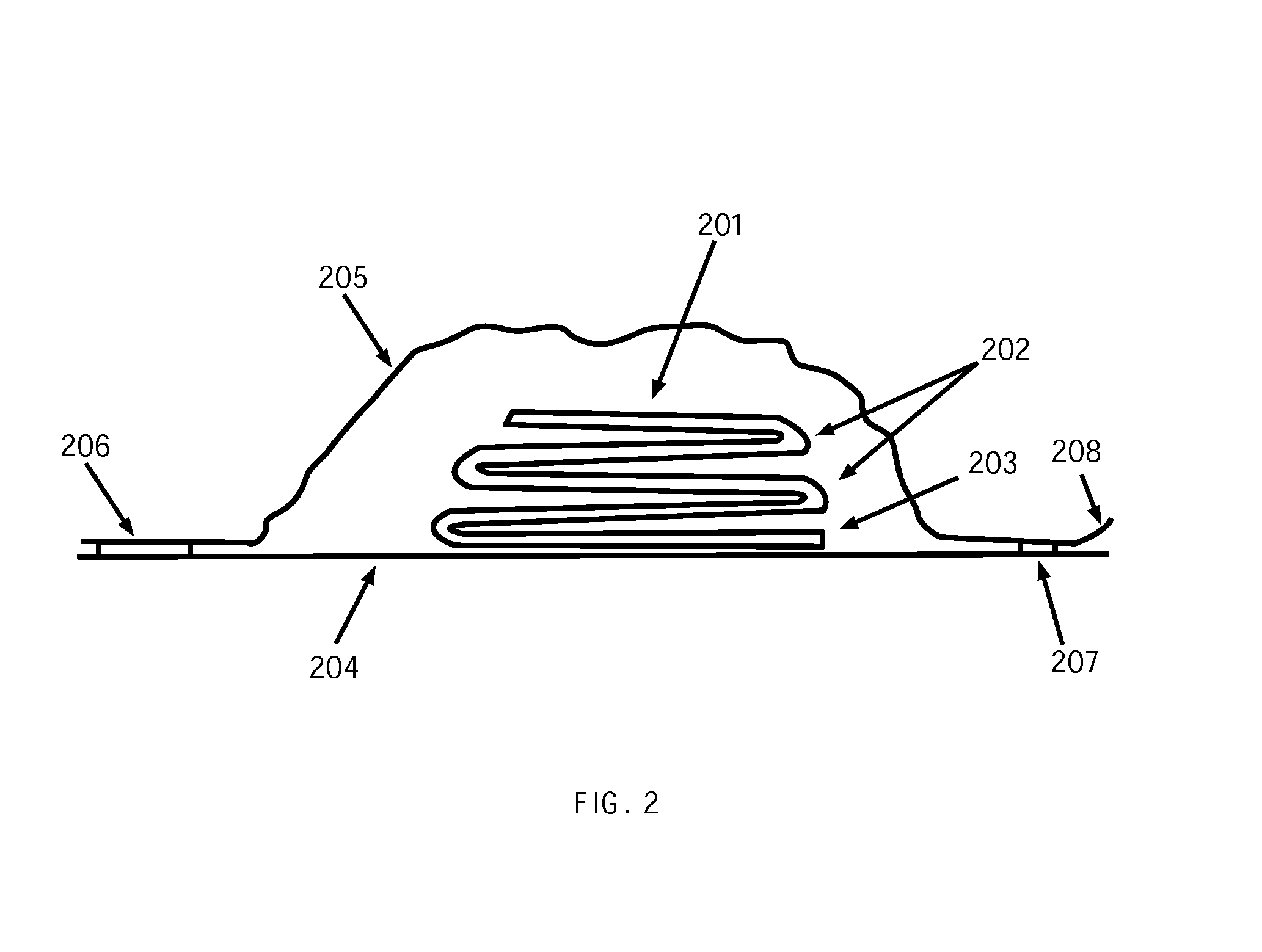Novel biological implant compositions, implants and methods
a biological tissue and composition technology, applied in the field of biological tissue implants and biological tissue implant processing, can solve the problems of lack of material properties or handling characteristics, and surgeons are often faced with tradeoffs
- Summary
- Abstract
- Description
- Claims
- Application Information
AI Technical Summary
Benefits of technology
Problems solved by technology
Method used
Image
Examples
example 1
Creation of a Minimally Invasive Tissue Implant
[0095]A molded tissue implant may be prepared through acid treatment of human tissue material to create a slurry which may then be rinsed and mixed with demineralized bone matrix (DBM). Suitable processes for creating a tissue slurry are disclosed in assignee's U.S. Pat. No. 7,001,430, entitled “Matrix Composition for Human Grafts / Implants,” which issued to Mills et al., on Feb. 21, 2006; U.S. Pat. No. 7,131,994, entitled “Muscle-Based Grafts / Implants,” which issued to Mills, et al. on Nov. 7, 2006; and U.S. Pat. No. 7,883,541, entitled “Muscle-Based Grafts / Implants,” which issued to Mills et al., on Nov. 25, 2003, all of which are incorporated herein by reference in their entirety.
[0096]The DBM and human tissue slurry is poured into a mold about 25 mm wide by about 75 mm long by about 5 mm deep. The molded slurry is then frozen and lyophilized to create a dehydrated tissue sheet. The dehydrated implant is rehydrated by exposure to ster...
example 2
Rolled or Folded Sheet for Minimally Invasive Surgery
[0097]In one embodiment, a molded biological graft for implantation into a human patient may be formed from only human tissue components in a dehydrated state. In this embodiment the graft may be formed into a low, flat mold of about 0.5 mm to about 5 mm in thickness and about 10 mm2 to about 500 mm2 in surface area, frozen, lyophilized and removed from the mold. The mold may be round, rectangular, or of any shape to suit the surgical application. The dried implant may be rehydrated and then rolled or folded loosely or tightly, with optional compression, by hand or through use of a mandrel or winding or folding apparatus, into a first configuration suitable for passage into a human patient. The implant may be optionally dried in the rolled or folded state, further processed or sterilized and packaged in intermediate or final packaging before being delivered to a surgical site and then passed through a portal suitable for minimally...
example 3
Compressible Unitary Implant
[0101]In one embodiment, a unitary biological implant for implantation into a human patient may be formed essentially of human tissue components in a dehydrated state. In this embodiment the implant may have a first thickness and a first characteristic width immediately following an initial dehydration. In this embodiment the implant may be compressed to a second thickness less than about ¾ of the first thickness and rolled into a shape having a second characteristic width less than about ½ of the first characteristic width, to create a compact or compressed implant suitable for passage through a minimally invasive portal into a surgical site and able to unroll to substantially about the first characteristic width and to swell back to at least about the first thickness within the patient without substantial cracking, tearing or damage to the unitary biological implant.
PUM
| Property | Measurement | Unit |
|---|---|---|
| diameter | aaaaa | aaaaa |
| height | aaaaa | aaaaa |
| depths | aaaaa | aaaaa |
Abstract
Description
Claims
Application Information
 Login to View More
Login to View More - R&D
- Intellectual Property
- Life Sciences
- Materials
- Tech Scout
- Unparalleled Data Quality
- Higher Quality Content
- 60% Fewer Hallucinations
Browse by: Latest US Patents, China's latest patents, Technical Efficacy Thesaurus, Application Domain, Technology Topic, Popular Technical Reports.
© 2025 PatSnap. All rights reserved.Legal|Privacy policy|Modern Slavery Act Transparency Statement|Sitemap|About US| Contact US: help@patsnap.com



